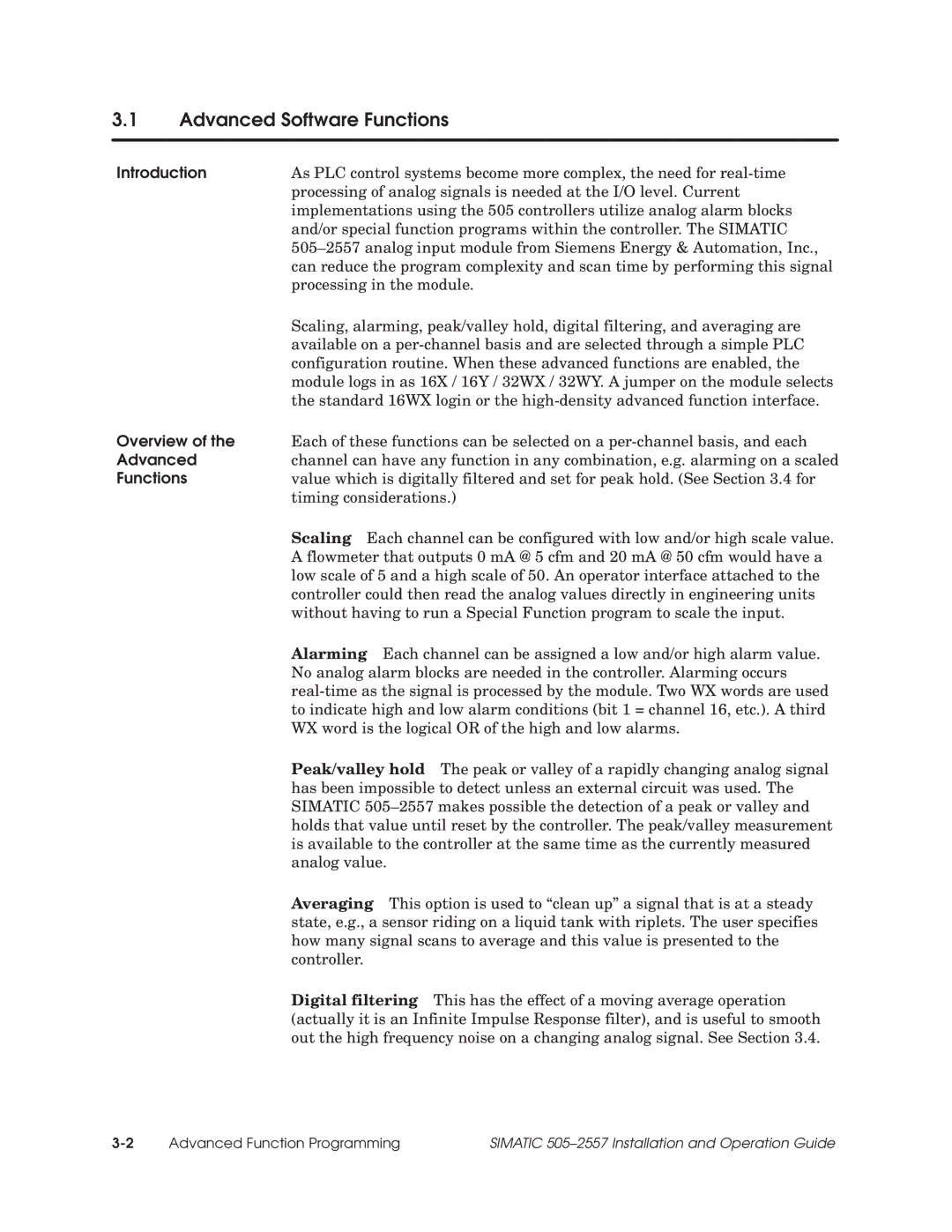3.1Advanced Software Functions
Introduction | As PLC control systems become more complex, the need for |
| processing of analog signals is needed at the I/O level. Current |
| implementations using the 505 controllers utilize analog alarm blocks |
| and/or special function programs within the controller. The SIMATIC |
| 505±2557 analog input module from Siemens Energy & Automation, Inc., |
| can reduce the program complexity and scan time by performing this signal |
| processing in the module. |
| Scaling, alarming, peak/valley hold, digital filtering, and averaging are |
| available on a |
| configuration routine. When these advanced functions are enabled, the |
| module logs in as 16X / 16Y / 32WX / 32WY. A jumper on the module selects |
| the standard 16WX login or the |
Overview of the | Each of these functions can be selected on a |
Advanced | channel can have any function in any combination, e.g. alarming on a scaled |
Functions | value which is digitally filtered and set for peak hold. (See Section 3.4 for |
| timing considerations.) |
| Scaling Each channel can be configured with low and/or high scale value. |
| A flowmeter that outputs 0 mA @ 5 cfm and 20 mA @ 50 cfm would have a |
| low scale of 5 and a high scale of 50. An operator interface attached to the |
| controller could then read the analog values directly in engineering units |
| without having to run a Special Function program to scale the input. |
| Alarming Each channel can be assigned a low and/or high alarm value. |
| No analog alarm blocks are needed in the controller. Alarming occurs |
| |
| to indicate high and low alarm conditions (bit 1 = channel 16, etc.). A third |
| WX word is the logical OR of the high and low alarms. |
| Peak/valley hold The peak or valley of a rapidly changing analog signal |
| has been impossible to detect unless an external circuit was used. The |
| SIMATIC 505±2557 makes possible the detection of a peak or valley and |
| holds that value until reset by the controller. The peak/valley measurement |
| is available to the controller at the same time as the currently measured |
| analog value. |
| Averaging This option is used to ªclean upº a signal that is at a steady |
| state, e.g., a sensor riding on a liquid tank with riplets. The user specifies |
| how many signal scans to average and this value is presented to the |
| controller. |
| Digital filtering This has the effect of a moving average operation |
| (actually it is an Infinite Impulse Response filter), and is useful to smooth |
| out the high frequency noise on a changing analog signal. See Section 3.4. |
Advanced Function Programming | SIMATIC 505±2557 Installation and Operation Guide |
